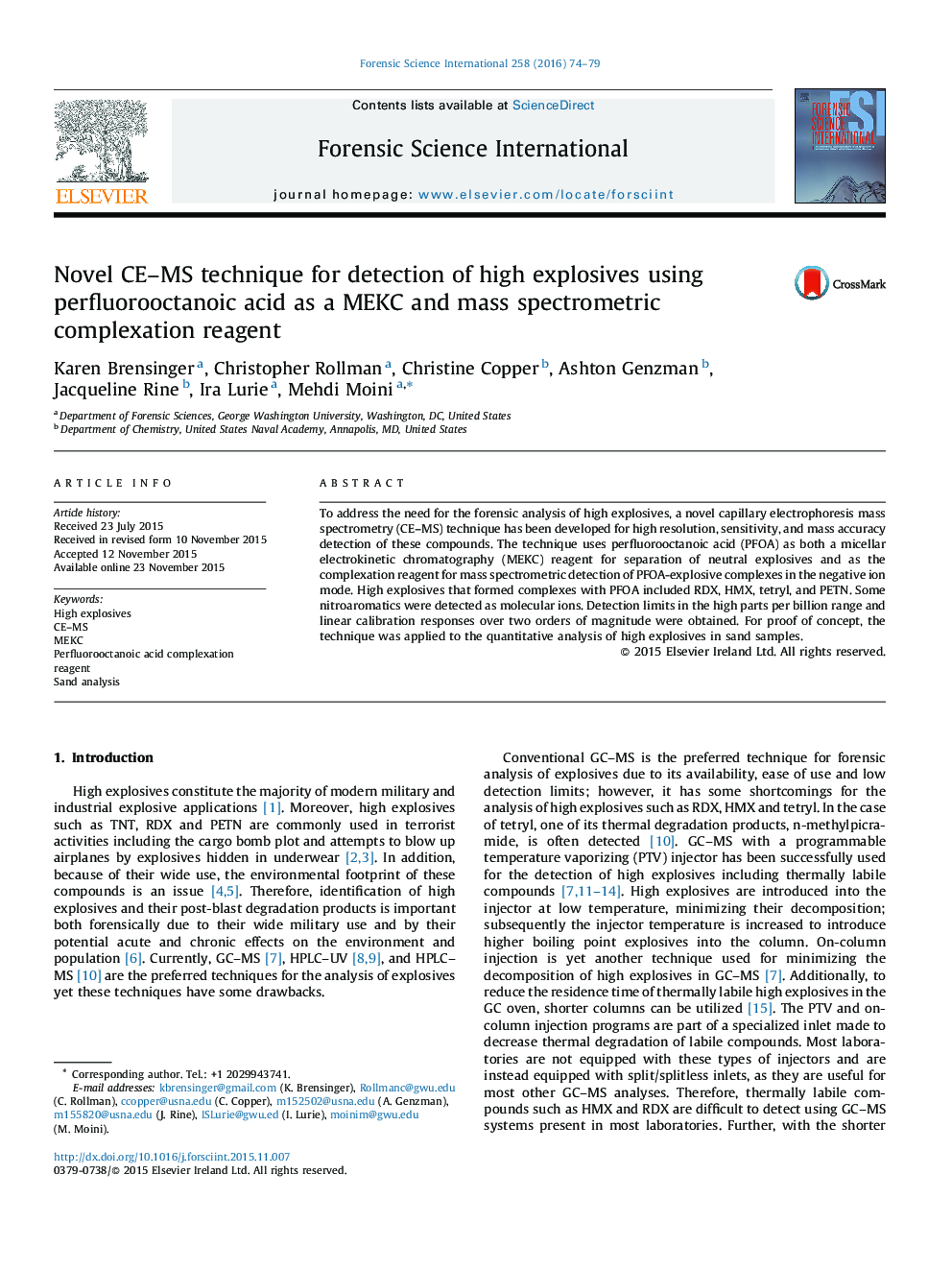| کد مقاله | کد نشریه | سال انتشار | مقاله انگلیسی | نسخه تمام متن |
|---|---|---|---|---|
| 95234 | 160420 | 2016 | 6 صفحه PDF | دانلود رایگان |
• Sheathless CE MEKC orbitrap MS analysis of high explosives in negative ESI mode.
• Use of perfluorooctanoic acid as a complexation reagent for most high explosives.
• Detection of high explosives as PFOA-explosive complexes.
• Parts per billion detection limit and more than 2 orders of magnitude dynamic range.
To address the need for the forensic analysis of high explosives, a novel capillary electrophoresis mass spectrometry (CE–MS) technique has been developed for high resolution, sensitivity, and mass accuracy detection of these compounds. The technique uses perfluorooctanoic acid (PFOA) as both a micellar electrokinetic chromatography (MEKC) reagent for separation of neutral explosives and as the complexation reagent for mass spectrometric detection of PFOA-explosive complexes in the negative ion mode. High explosives that formed complexes with PFOA included RDX, HMX, tetryl, and PETN. Some nitroaromatics were detected as molecular ions. Detection limits in the high parts per billion range and linear calibration responses over two orders of magnitude were obtained. For proof of concept, the technique was applied to the quantitative analysis of high explosives in sand samples.
Journal: Forensic Science International - Volume 258, January 2016, Pages 74–79
